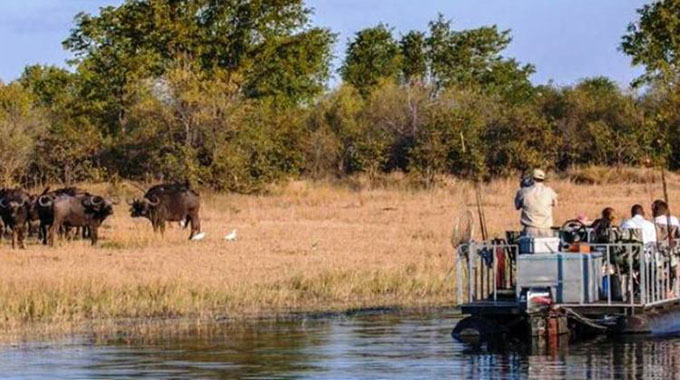Of rhino horn, manhood, fingernails and toenails
conscience for too long, and it is men’s obsession with aphrodisiacs.
Back in the village, in the land of milk, honey and dust or Guruve if you like, men spend most of their free time bragging about their manhood and their various abilities to use it.
This villager knows that this is quite a pre-occupation for the many men from the pot-bellied to the pencil-slim, from the tall to the short ones and indeed from the ugly to the most handsome, every one brags about his ability and no one accepts inability.
The pre-occupation with bedroom antics have of late, led to the near extinction of the rhino, whose horn is, unfortunately, believed to be some strong aphrodisiac.
But the village soothsayer, the ageless autochthon of wisdom and knowledge insists men are a silly lot, killing an entire five tone rhino to find a supposed solution to their sexual inefficiencies.
Some people, urbanites and villagers included, believe that the rhino horn has medicinal or even magical properties and this is the sole reason the rhino has been poached to near extinction.
According to the village soothsayer, scientific tests done locally and the developed world yonder, have proved this to be a mere myth. Rhino horn is in fact, composed of the same material as fingernails and toenails. It has no medicinal properties. Taking rhino horn powder is no more effective than chewing your fingernails.
It is hoped that if this message is able to filter through to end users it will have the power to reduce the demand for rhino horn and hopefully men can look at other means of enhancing their manhood.
Unless concerted and collaborative efforts are made to salvage endangered animals from the current onslaught, the beautiful animals may become extinct.
Last year alone, Zimbabwe, the land of Munhumutapa lost 23 rhinos and the country is left with less than 1 000 of these beasts. None of these rhinos met with their death naturally. It was all poaching.
This villager believes its high time we create awareness on the plight of the rhino and help stem illegal trade in rhino and rhino products worldwide.
From the books of knowledge this villager has read that there are five species of rhino in the world, two of which, the Black (hook-lipped) and White (Square-Lipped) rhinos live in Africa. The other three, the Indian, Javan, and Sumatran rhinos live in Asia.
The Javan Rhino is the most critically endangered mammal on earth. The Black, White, and Sumatran rhinos all have two horns, while the Javan and Indian only have one.
The African continent population was estimated at 65 000 in 1960, but today much fewer animals are left. The black rhino (Diceros bicornis) was put on Appendix 1 under the Convention on International Trade in Endangered Species of Flora and Fauna (CITES) in 1973 as a result of this alarming decline. It means it should be highly protected.
Through poaching, which intensified in the 1980s, the rhino population was reduced to less than 3 000 by 1992 on the African continent. Following unprecedented poaching in the Zambezi valley, Sebungwe and Hwange-Matetsi sub-regions, numbers in Zimbabwe declined to about 250 by 1993.
The magnitude of this onslaught was alarming, prompting the formulation of conservation strategies to harness the decline. These measures led to the recovery of the population to 400 by 2 000 and to the current estimate of 1 000. This makes Zimbabwe the fourth largest after South Africa, Namibia and Kenya in terms of aggregate rhino population.
However, despite the gains made in rhino conservation, poaching remains the single largest threat to rhino survival. The country lost 66 rhinos during the period 2010 to December 2011.
While the rate of our losses has slowed down significantly this year, our rhino population remains under severe threat. Neighbouring countries notably South Africa are facing similar threats to their populations. Zimbabwe like many other rhino protectorates face an onslaught from sophisticated, ruthless and heavily armed international criminal gangs and syndicates running the illegal rhino horn trade.
As you are aware, rhinos constitute one of the highly regarded “Big Five” of African wildlife that acts as an axis of attraction and a draw card for tourism.
The other wild animals that are part of the big five are elephant, lion, leopard and the buffalo. To this end while Zimbabwe is home to approximately 1 000 rhinos, both black and white, these are currently listed as critically endangered on the IUCN red list of endangered mammals.
As indicated earlier, the number of rhinos poached in Zimbabwe continues to rise. Halting the current wave of poaching requires concerted efforts by all stakeholders, otherwise the risk is that the hard-won population increases achieved by conservation authorities in the past will be completely reversed.
Halting these poachers is not an easy task, given that these criminals use “high-technology” gear, including night-vision equipment, veterinary tranquillisers, silencers and helicopters as has been witnessed elsewhere in the region. If not stopped soon, Zimbabwe and its neighbours’ rhino populations will soon slide into critically low levels, hence, pushing them to the edge of extinction.
Aggravating the precarious situation of the rhino is the “heightened” demand for rhino horn, which has long been prized as an ingredient in traditional Asian medicine. More recently it has also been claimed to possess cancer-curing properties. However, as mentioned before, the reality is that there is no scientific or any other evidence for that matter to support these claims, hence, why kill the rhino?
The rhino is just an athletic looking animal, whose horn is a weapon to protect itself.







Comments